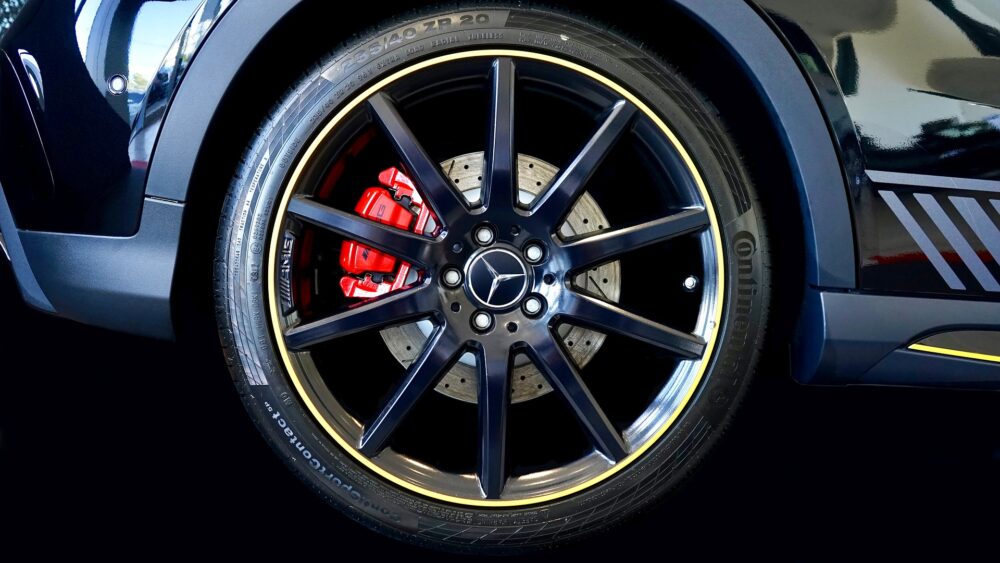Keeping an eye on your tyres is the minimum any responsible car owner should do. After all, tyres are the only part of the car in regular contact with the road, and as such should be kept in great condition to ensure that you enjoy a smooth and safe ride when you are out and about on the roads. But we are living through a time of huge technological advances: just fifty or so years ago, computers were in their infancy, whereas today we all carry a high-powered device in our pockets that even the most fanciful science-fiction writers would have hesitated to invent. These electronic goodies can help you to keep your tyres in tip-top condition without any doubts or errors.
If you are driving in Yorkshire, high traffic levels can lead you to use your brakes more often, exerting unnecessary pressure on tyres. For this reason you need to know important ways you can check your tyre quality on a regular basis.
Let’s take a look at five tech-savvy ways to monitor your tyres.
Buy the Best
Tyre research and development is continually in work and buying the best quality tyres that you can afford is a quick and easy way to take advantage of the latest tyre technology. Modern tyres are wonders of engineering, designed and crafted to work in a range of conditions found on the UK’s roads – the newer your tyres, the safer you are more likely to be. If you are in the market and are searching for tyres in Pontefract, you can book at Reg Greenwood (01977702317).
Tyre Pressure Gauge
Modern tyres work best at the right levels of inflation: over-inflated tyres can cause a strip of excess wear around the middle, while under-inflated tyres can cause ‘drag’ wearing out too quickly and making the car’s drive feel slushy and almost out of control – not a very pleasant driving experience for anyone. If you can’t get to your local service station to monitor your tyre pressure, invest in a tyre pressure gauge. These are usually small enough to slip into the glove-box, but will offer a reliable instant reading of your pressure levels, alerting you very quickly to any loss of inflation, very often in time to get to a service station to find and remedy the fault.
Use Traction and Stability Controls
If your vehicle is a very modern one, it may come with traction and stability controls. These are computer devices which monitor the performance of all four tyres independently, collating and comparing the four readings and alerting you should one tyre not be pulling its weight. Small bumps and potholes can be enough to throw off the balance of your wheels, and leaving this unattended can worsen other issues, increasing wear and tear, offering a bumpy ride and sounding terrible. Having your own car warn you that it has a problem is a brilliant and satisfactory solution, and can make fanciful drivers feel like their car is looking out for them! If your car has traction and stability controls, make sure that they are enabled and that you understand what the messages mean: and act on any warnings that the system sends you as soon as you can.
Lane Departure Alerts
Not all roads have ‘cat’s eye’ stripes in the middle, or ‘rumble strips’ on the verge to alert you if you begin to leave your lane. For those old-fashioned roads, modern cars have the answer, highly sensitive sensors that scan the road and note an acceptable width of travel, sounding an alarm if you stray too far into the middle of the road (possibly into oncoming traffic) or too far to the side (where you are at risk of leaving the road and hitting a tree, ditch or other roadside obstacle).
Tread Depth Gauge
If a 20p isn’t cutting it for you, investing in a purpose-designed tread depth gauge can help you to ensure that your tyres are roadworthy and legally compliant. A 20p coin can be used as a make-shift guide with a simple, binary yes-no response: when the coin is standing in the deepest part of the groove, if the outer band can be seen, the tyres are not legal; if it is covered, they are legal. However, a depth gauge can tell you exactly how many millimeters of depth your tread has left on it, and the fancier models can even predict how many driving miles you have until your tyres will no longer be suitable.
These technological aids can be a driver’s boon, especially if you drive a lot. Think about how many miles you cover in a year before deciding on which features will do you the most good in your driving and car ownership journey.


